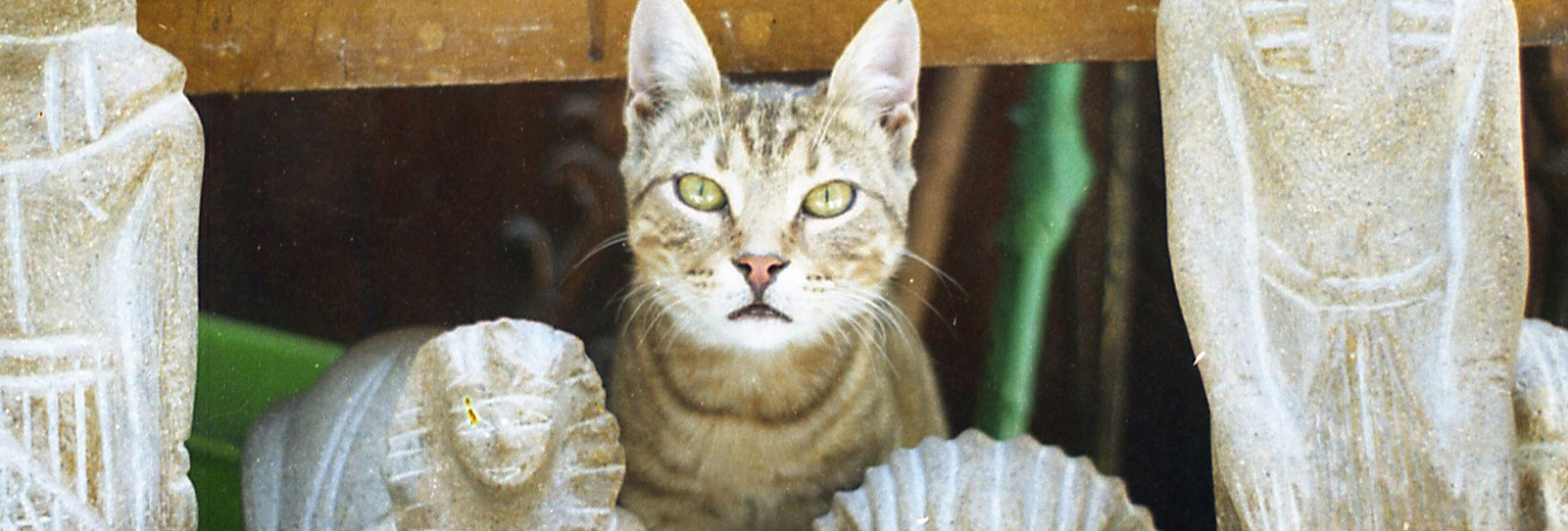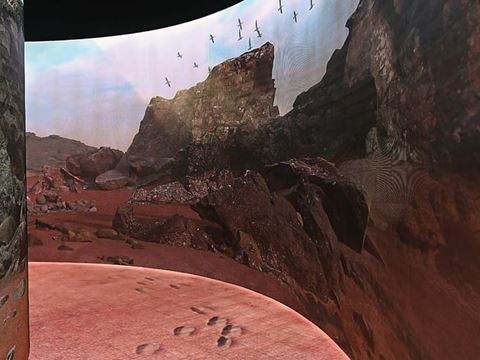
FirstLook: Cairo Cat
Since Pharaonic times, thousands of cats have appeared in Egyptian iconography and literature. Today Cairo, they pad and paw their way everywhere, even staring down the camera of photographer Lorraine Chittock.
In any town or city, there are always plenty of reminders that we humans are not the only inhabitants. This is particularly true in Cairo, thanks in great part to cats, who seem to pad and paw their way everywhere. And they have been doing this in Egypt since Pharaonic times, when they were mummified and solemnly interred by the thousands, and the goddess Bastet was depicted first as a lioness and, later, as a domestic cat. Cats have appeared in Egyptian iconography, poetry and literature for millennia, up to modern times.
This tabby, who frequented a tourist shop near Fishawi’s Café, a favorite of Nobel Prize-winning author Naguib Mahfouz, acted like she knew all this history by heart. As she pranced over the souvenir sphinxes, Nefertitis and Tuts, I could sense her almost demanding her portrait be taken. I complied. She stared down the camera as if she had been studying the stone faces around her all her life.
—Lorraine Chittock www.CairoCats.com
This tabby, who frequented a tourist shop near Fishawi’s Café, a favorite of Nobel Prize-winning author Naguib Mahfouz, acted like she knew all this history by heart. As she pranced over the souvenir sphinxes, Nefertitis and Tuts, I could sense her almost demanding her portrait be taken. I complied. She stared down the camera as if she had been studying the stone faces around her all her life.
—Lorraine Chittock www.CairoCats.com
You may also be interested in...

Ambon Island, East Indonesia by Hengki Koentjoro
Arts
This photo was taken off Ambon Island, East Indonesia in 2010. It is one of my favorites, illustrating the free-spirited nature of the children in the rural archipelago. While some children in the big cities may stay inside and play computer games, the children in Ambon with easy access to the water see the ocean surrounding their village as their playground.
Orion Through a 3D-Printed Telescope
Arts
With his homemade telescope, Astrophotographer Zubuyer Kaolin brings the Orion Nebula close to home.
Ithra Explores Hijrah in Islam and Prophet Muhammad
History
Arts
Avoiding main roads due to threats to his life, in 622 CE the Prophet Muhammad and his followers escaped north from Makkah to Madinah by riding through the rugged western Arabian Peninsula along path whose precise contours have been traced only recently. Known as the Hijrah, or migration, their eight-day journey became the beginning of the Islamic calendar, and this spring, the exhibition "Hijrah: In the Footsteps of the Prophet," at Ithra in Dhahran, Saudi Arabia, explored the journey itself and its memories-as-story to expand understandings of what the Hijrah has meant both for Muslims and the rest of a the world. "This is a story that addresses universal human themes," says co-curator Idries Trevathan.